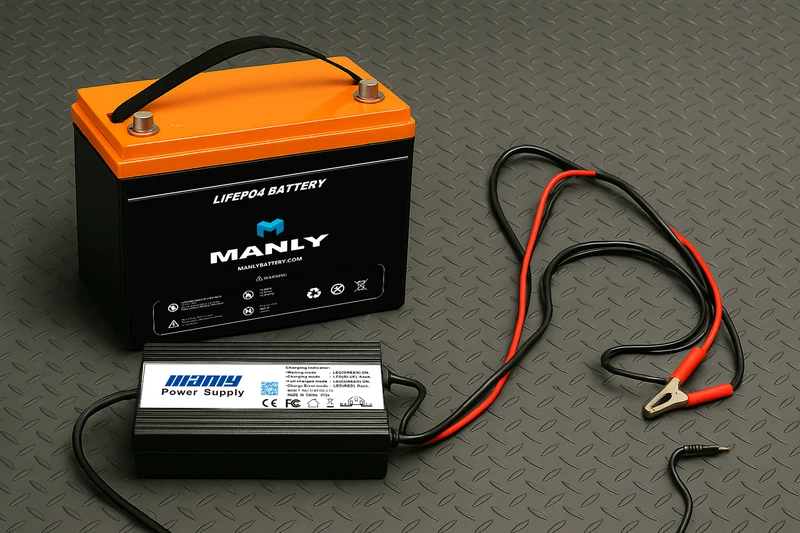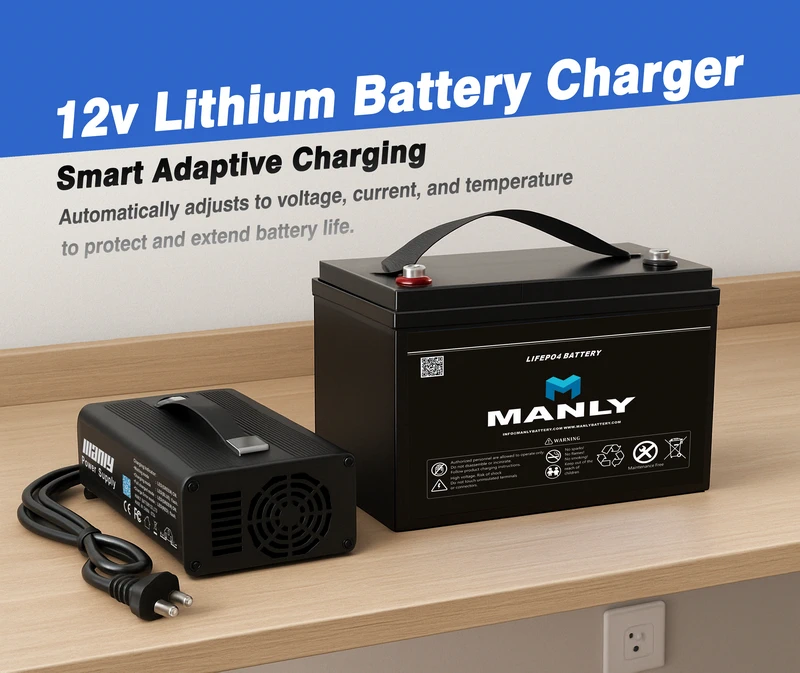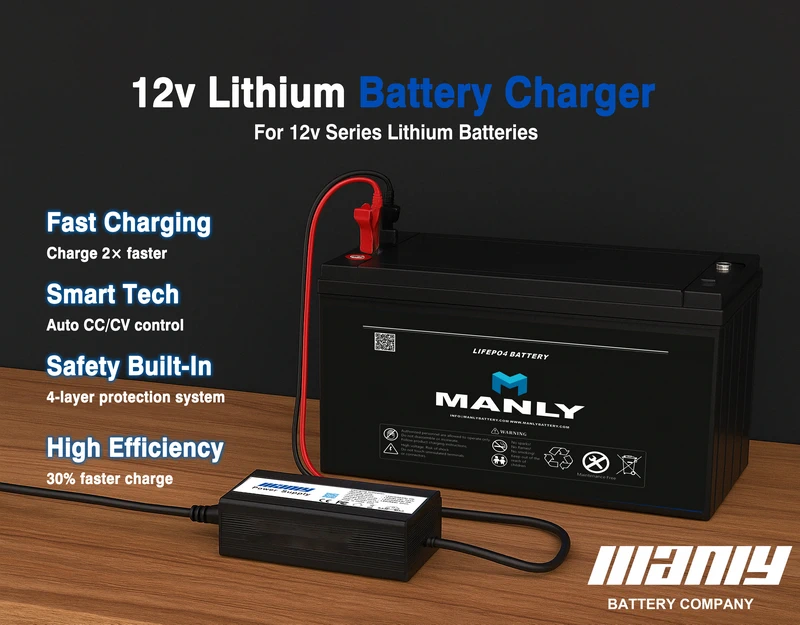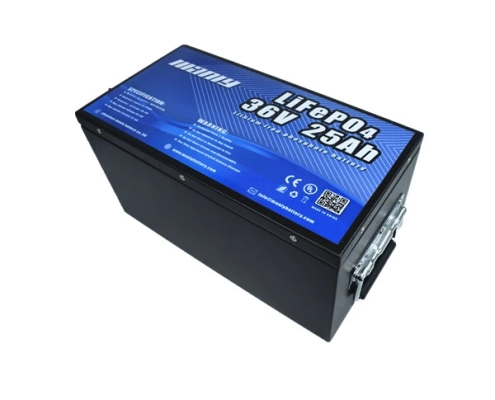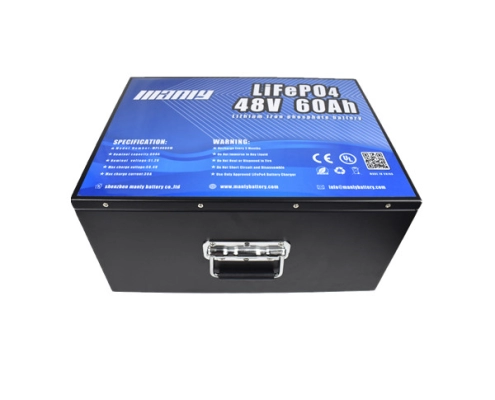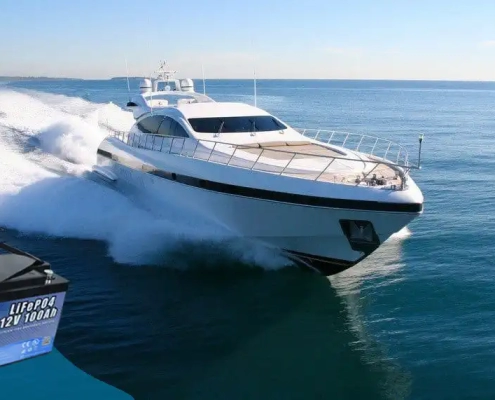What Amp To Charge Marine Battery
Table of Contents
- What Amp To Charge Marine Battery
- Understanding Marine Battery Charging Basics
- How Many Amps Should You Use to Charge a Marine Battery?
- Choosing the Right Marine Battery Charger
- Output Voltage Must Match Your Boat’s Electrical System
- Battery Chemistry Affects Charging Amps
- How Battery Charger Manufacturers Influence Charging Amps
- Smart Chargers vs. Traditional Chargers
- How Amps Affect Battery Life and Safety
- Conclusion
- FAQ
- Learn More About Battery
When charging a marine battery, amperage matters just as much as voltage—sometimes even more. So, what amp to charge marine battery is best? The answer depends on your battery’s size, chemistry, and usage. Choosing the wrong amperage can lead to undercharging, overheating, or shortened lifespan. Whether you’re a boat owner, technician, or sourcing for us wholesale distributors, this guide walks you through the science and practical tips behind marine battery charging. From matching amps to amp-hours, to selecting a smart marine battery charger from a reliable battery charger manufacturer, you’ll get the clarity needed to power your boat safely and efficiently.
Understanding Marine Battery Charging Basics
If you’re new to marine battery care—or upgrading your boat’s power system—understanding how amperage works is essential. This section explains what amps really mean, why they matter just as much as voltage, and how choosing the wrong amperage can shorten battery life or cause damage.
1. What Amps Actually Do in Marine Battery Charging
Amps are a measure of how quickly electricity flows from your marine battery charger into the battery. It’s like pouring water into a tank—the higher the amps, the faster the battery fills. But speed isn’t always safe.
Using too many amps can generate excessive heat inside the battery. That heat damages internal components, degrades chemicals, and may even trigger thermal runaway in lithium systems. On the flip side, using too few amps makes charging slow and inefficient. You might never fully top off your battery, especially if you’re trying to charge multiple battery banks in a limited time.
To avoid these problems, choose a marine battery charger designed for your battery type—AGM, flooded, gel, or lithium. Many modern chargers from a trusted battery charger manufacturer come with smart charging profiles that automatically adjust amperage based on the battery’s needs.
2. Why Amperage Matters Just as Much as Voltage
Most boat owners think of voltage first—and that’s fair. You want a 12V charger for a 12V battery, right? But voltage is only part of the picture. Voltage provides the push, but amperage determines how much power actually flows.
If you supply the right voltage but push too many amps, you risk overheating. If you limit the amps too much, your battery might not charge completely or take way too long—especially in cold weather or with deep-cycle batteries.
That’s why manufacturers like MANLY Battery recommend pairing their chargers and batteries with settings that match your system. For example, a 100Ah marine battery typically charges best between 10A and 30A. Going higher than that without approval from the battery maker? You’re asking for trouble.
How Many Amps Should You Use to Charge a Marine Battery?
Charging speed matters—but charging smart is more important. The wrong amperage setting can shorten your battery’s life, waste time, or even cause costly damage. Here’s how to dial in the right amps for your marine battery setup.
1. General rule: 10%–30% of the battery’s Ah rating
As a general guideline, the safest way to charge a marine battery is using a charger that supplies between 10% and 30% of the battery’s total amp-hour (Ah) rating. For example:
A 100Ah battery needs a charger that delivers between 10A and 30A.
If your battery is 85Ah (like a Group 24), aim for 8A to 25A.
For a 125Ah Group 31 battery, a 13A to 37A range is ideal.
This range helps prevent both undercharging and overheating. Undercharging can leave you with a battery that fades too fast. Overcharging can cook the internals—especially in warmer weather or enclosed spaces where heat can’t dissipate.
If you’re working with a lithium setup, always check your battery specs. Some lithium batteries can handle up to 100% of their Ah rating in amps, but only if the battery charger manufacturer has designed the charger to safely support that.
2. Example calculations: Group 24 vs Group 31
To put this into perspective:
| Battery Group | Amp-Hour (Ah) Rating | Recommended Amps (10–30%) |
|---|---|---|
| Group 24 | ~85Ah | 8A–25A |
| Group 31 | ~125Ah | 13A–37A |
If you’re unsure of your battery’s exact Ah rating, check the label or the datasheet. Most high-quality marine battery chargers include adjustable current settings, so you can fine-tune output based on the battery group and chemistry.
3. What Happens When Amps Are Too High?
Too many amps can do more harm than good. Here’s what to watch for:
Overheating – High current creates internal resistance, generating excess heat.
Shortened Cycle Life – Repeated high-amp charging stresses battery plates and chemicals.
Safety Risks – Overcurrent can damage lithium battery BMS units or even cause fires.
Choosing the Right Marine Battery Charger
Finding the right marine battery charger isn’t just about price or brand—it’s about matching the charger to your battery chemistry, onboard power needs, and environment. Whether you operate a kayak or a cruising yacht, choosing the wrong charger can damage your battery or limit performance. This section helps you make the right call.
1. Match Specs to Battery and Application
Your charger must match the voltage, chemistry, and capacity of your battery. For example, AGM and lithium batteries need different charging profiles. A high-quality battery charger manufacturer offers chargers that support multi-stage charging and battery-specific profiles. That ensures your battery charges efficiently and safely.
Small boats with a single 12V Group 24 battery might only need a 10A portable charger. Larger vessels with multiple Group 31s or a 36V trolling motor bank require a powerful multi-bank charger.
2. Compare the Three Main Charger Types
2.1. Portable Marine Battery Chargers
Portable chargers work best for small craft like kayaks and dinghies. They usually deliver 5 to 30 amps and connect to shore outlets. These units are lightweight and convenient, making them ideal for seasonal use or boaters who store batteries at home. However, they lack weatherproofing and aren’t built for high-capacity banks or continuous use.
2.2. Waterproof Onboard Chargers
Waterproof onboard chargers are built for bass boats, fishing skiffs, and saltwater rigs. Their sealed design protects against moisture but limits cooling. As a result, most waterproof units cap out around Group 31 battery sizes. They’re reliable in wet environments but may struggle to push high amperage for large battery systems.
2.3. Vented Onboard Chargers
For serious boating needs—cruisers, yachts, or multi-bank systems—vented onboard chargers offer the best performance. They feature internal fans and heat vents, allowing them to safely deliver higher amps over longer periods. These units work well with all battery chemistries, especially lithium, and are ideal for boats with large electrical loads or constant AC access.
Output Voltage Must Match Your Boat’s Electrical System
If your boat runs a 24V battery system but you plug in a 12V charger, the battery won’t charge—and you could damage the charger. This section explains how to match voltage properly so your marine battery charger operates safely and efficiently.
1. Choose the Right Voltage for Your Setup
- 12V: Most common for small boats, starter batteries, and basic accessories.
- 24V: Often used for medium trolling motors, dual battery banks, or heavier electronics.
- 36V/48V: Found in high-performance systems, large trolling motor setups, or boats with solar power banks.
Before purchasing, inspect your battery bank or electrical panel. Many battery charger manufacturers label their chargers clearly, but you must confirm compatibility with your onboard system.
2. Risks of a Voltage Mismatch
Using the wrong charger voltage can cause undercharging, overcharging, or even system failure. Lithium batteries are especially sensitive—charging at the wrong voltage can trigger the BMS to shut down or permanently reduce battery capacity.
Smart chargers designed for marine use often allow you to select voltage or auto-detect your battery type. These options reduce user error and simplify installations. If you’re buying chargers through business wholesale networks, choosing flexible chargers that support multiple voltages can improve customer satisfaction and reduce inventory complexity.
Battery Chemistry Affects Charging Amps
Marine batteries don’t all behave the same when charging—and the amps you push into them can make or break their lifespan. In this section, we’ll explore how battery chemistry determines amp tolerance and what that means when choosing or using a marine battery charger. If you’re a boat owner, installer, or part of a procurement team, this information will help you make smarter, safer decisions.
1. Different Chemistries = Different Amp Tolerances
Every marine battery chemistry—flooded lead-acid, AGM, GEL, and lithium—has its own ideal charging range:
- Flooded batteries usually handle up to 25% of their amp-hour (Ah) rating.
- AGM batteries can safely go up to 40% of Ah.
- GEL batteries are more delicate and should stay under 30%.
- Lithium (LiFePO4) batteries can accept up to 100% of Ah, depending on BMS design.
These tolerances aren’t suggestions. They reflect how each battery type handles heat and internal resistance. Overstepping these limits can cause premature wear, swelling, or in severe cases, thermal runaway.
2. Flooded, AGM, GEL vs. Lithium Marine Batteries
Traditional lead-acid types—like flooded, GEL, and AGM—charge best using a three-stage process: bulk, absorption, and float. They taper off the current as the battery fills. Lithium batteries don’t follow that path.
Lithium models prefer a two-stage method: constant current followed by constant voltage (CC-CV). That’s why you need a charger built for lithium chemistry. Using a standard marine battery charger without a lithium profile risks overcharging, undercharging, or disabling the BMS.
If you’re sourcing chargers for retail or large fleets, us wholesale distributors often rely on brands like MANLY Battery to provide lithium-ready chargers designed for modern energy storage systems.
3. Charging Lithium Marine Batteries Safely
To charge lithium batteries correctly, you need more than the right voltage—you need the right profile. Smart chargers from a qualified battery charger manufacturer manage the lithium battery’s voltage curve, current limit, and thermal safety.
There are two key charging strategies:
- CC (Constant Current): Charges quickly up to ~97% capacity.
- CC-CV (Constant Current + Constant Voltage): Tops off to 100% safely.
For safety and long-term performance, always follow the battery’s maximum charge rate (often shown as “C” rate). If your charger delivers too many amps without regulation, the BMS may overheat or shut off. When in doubt, choose a charger with a dedicated lithium mode.
How Battery Charger Manufacturers Influence Charging Amps
The way your charger delivers power has just as much impact on battery life as the battery chemistry itself. That’s why a high-quality battery charger manufacturer plays a vital role in safe and efficient marine charging. Whether you’re an end-user or a distributor, choosing the right technology matters.
1. Smart Features That Regulate Amp Flow
Today’s smart marine battery chargers use advanced circuitry and sensors to control how current flows into the battery. These chargers don’t blindly push power. Instead, they monitor:
- Temperature of the battery
- Real-time voltage
- Charge acceptance rate
- Battery type and size
This dynamic approach ensures the battery receives the right amount of current—nothing more, nothing less. It also prevents overheating and helps extend cycle life. When used across multi-bank systems, smart amp distribution becomes critical for balance and safety.
2. Adjustable Output vs. Fixed Amp Chargers
Some chargers offer a fixed amp rate—great for simple setups but limited for mixed-use fleets. Others feature selectable output ranges, letting users tailor current to specific batteries. This flexibility becomes especially useful when managing different battery sizes or switching between lead-acid and lithium.
For companies operating in the business wholesale space, adjustable chargers reduce the need to carry multiple models. That cuts inventory costs while increasing compatibility across marine platforms.
3. How Top Battery Charger Manufacturers Improve Charge Safety and Efficiency
What separates a top-tier battery charger manufacturer from the rest? Engineering, innovation, and compliance. Industry leaders prioritize:
- Integrated BMS support for lithium batteries
- Temperature-compensated charging to avoid thermal stress
- Multiple charging profiles (Flooded, AGM, GEL, Lithium)
- Overcurrent and reverse polarity protection
These chargers are also built to last—rugged enclosures, corrosion resistance, and marine-grade certifications (UL, CE, ISO). For us wholesale distributors, offering chargers that meet these standards helps maintain customer trust and minimize returns.
Smart Chargers vs. Traditional Chargers
Choosing between a smart charger and a traditional one isn’t just about convenience—it can directly impact how long your marine batteries last and how safely they charge. This section explains how modern smart marine battery chargers automatically adjust amperage, reduce charging errors, and extend battery life, making them a top choice for today’s boaters and equipment suppliers.
1. How Smart Marine Battery Chargers Regulate Amperage Automatically
Smart chargers use microprocessor-controlled systems to monitor and adjust current flow in real time. Unlike traditional chargers that deliver a constant voltage or current regardless of battery condition, smart chargers tailor their output based on:
- Battery voltage
- State of charge
- Battery chemistry (AGM, Flooded, GEL, Lithium)
- Ambient temperature
This built-in intelligence protects against overcharging, reduces overheating, and prevents premature wear—especially in lithium batteries that demand tight current control. Top battery charger manufacturers include these features as standard across their lithium-ready models.
2. Multi-Stage Charging, Temp Compensation, and Maintenance Mode
Modern smart chargers typically operate using a multi-stage approach:
- Bulk stage: Delivers high amps to quickly recharge the battery.
- Absorption stage: Holds voltage steady while tapering amps to safely top off.
- Float/maintenance stage: Keeps the battery charged without overloading it.
Some chargers include a fourth stage—equalization—for flooded lead-acid batteries to break up sulfate buildup.
Smart chargers also incorporate temperature compensation, adjusting voltage based on ambient or battery temperature. This is critical when charging in cold climates (which require higher voltage) or in hot engine compartments (which require lower voltage).
Finally, maintenance mode (or float mode) helps preserve batteries during long periods of inactivity. This feature is ideal for seasonal boats and emergency backup systems.
How Amps Affect Battery Life and Safety
Faster charging means higher amps—but that doesn’t always mean better. This section breaks down how charging current impacts battery health, and why choosing the right amp level matters more than just reducing charge time.
1. Fast Charging vs. Slow Charging: What’s the Tradeoff?
The faster you charge, the hotter your battery gets. That heat can shorten lifespan, especially for sensitive chemistries like GEL or lithium. High current can also accelerate electrode degradation and trigger internal resistance issues.
Slow charging is gentler, preserving long-term capacity and reducing the chance of failure. Fast charging, on the other hand, is useful when turnaround time matters—but only when the battery and marine battery charger are designed for it.
Use this general rule:
- Charge at 10–30% of your battery’s amp-hour rating (C-rate) for everyday use.
- Use fast charging only if your battery charger manufacturer and battery specs explicitly allow it.
For instance, a 100Ah lithium battery may allow up to 50A, while a 100Ah GEL battery might top out at 20A. Choosing the wrong charger could overheat cells or reduce charge cycles.
2. Risks of Overheating, Overcharging, and Shortened Cycle Life
Excess amperage leads to:
- Heat buildup: Damages internal components and BMS circuitry.
- Overcharging: Causes lithium cells to swell, vent, or shut down.
- Reduced cycle life: High-amp charging lowers the number of usable charge cycles over the battery’s lifespan.
To mitigate these risks, smart chargers with amp regulation, thermal protection, and voltage calibration are essential. If you distribute to marine dealers or repair shops under a business wholesale model, offering intelligent, safe chargers helps differentiate your product line.
Conclusion
Knowing what amp to charge marine battery is essential for protecting your battery and maximizing its lifespan. Charging too slowly wastes time, while charging too fast risks internal damage. The sweet spot? Typically 10–30% of your battery’s amp-hour rating—though lithium systems may allow more if your marine battery charger is properly designed. Whether you’re maintaining your personal boat or sourcing products through business wholesale channels, choosing chargers from a trusted battery charger manufacturer like MANLY Battery ensures safer charging, better performance, and longer-lasting batteries. Don’t just guess—charge with confidence.
FAQ
1. How many amps should you charge a marine battery at?
The ideal charging amperage for a marine battery depends on the battery’s amp-hour (Ah) capacity and chemistry. A general rule is to charge at 10% to 30% of the battery’s Ah rating. For example, a 100Ah deep-cycle battery should typically be charged at 10 to 30 amps. Charging within this range ensures safe, efficient performance without overheating or damaging the battery. For lithium batteries, check the battery’s datasheet—some models can handle even higher rates if supported by a marine battery charger manufacturer.
2. Is it better to charge a marine battery at 2 amps or 10 amps?
For most marine batteries, 10 amps is a better choice than 2 amps—especially for batteries rated above 50Ah. Charging at 2 amps is extremely slow and may not fully recharge the battery in a reasonable time, especially if it’s deeply discharged. A 10-amp smart charger can safely charge the battery faster without stressing it, provided the battery is designed for that current. Always follow the manufacturer’s recommendations and use a marine battery charger manufacturer that offers multi-stage, regulated charging.
3. Is it better to charge a battery at 2 amps or 8 amps?
In most cases, 8 amps is a more practical and efficient option than 2 amps, especially for batteries over 40Ah. Charging at 2 amps is considered a “trickle charge” and is typically reserved for small batteries or maintenance charging. An 8-amp charger provides a better balance of speed and safety for medium-sized marine batteries. However, always make sure the charger matches your battery type (AGM, flooded, lithium) and is built by a trusted marine battery charger manufacturer to ensure proper amp regulation.

